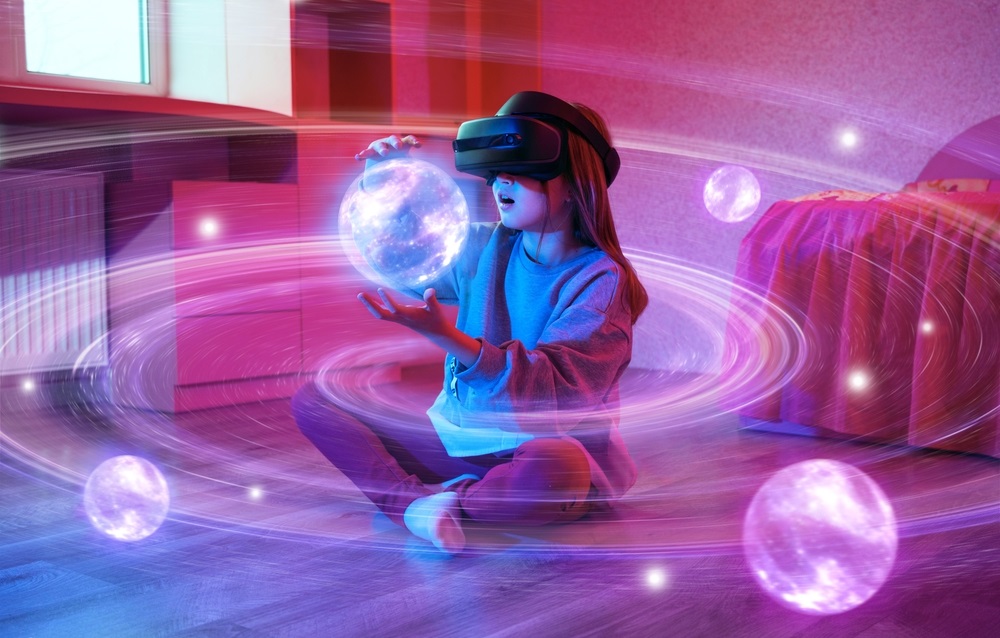
Revolutionizing Education with Immersive 3D Simulations

Immersive learning is a new educational concept that has entered the classroom. Immersive learning can simulate and bring to life real-world environments in a virtual environment.
Immersive learning means to immerse or allow a user to enter an educational environment so they feel as if they are an integral part of the learning environment.
Immersive learning harnesses state-of-the-art technology to create rich and engaging learning environments for learners. It acts as an antidote to the monotony of classroom lectures and textbook reading.
The immersive learning benefits include:
Offers a rich and realistic experience by placing learners in digitally created and enhanced environments with the help of 3D simulations.
Immersive learning leads to better retention through engaging and memorable learning experiences and interactive content.
Creating any kind of possibility that can enhance the learning outcomes and be fun and engaging. For example, immersive technology allows students to be launched into space, even enter a volcano to see how and why it explodes, or even meet their role model.
Now, these possibilities would not be possible in a traditional classroom, would they? But in a metaverse classroom, they certainly are.
What are 3D Simulations and Models?
3D virtual models are essential to showcase products in the metaverse.3D models allow a three-dimensional, 360-degree representation of a physical object or surface and even complete environments in the virtual space.
Since the metaverse is an immersive and interactive virtual space that allows users to connect with each other as well as digital objects, 3D models permit more intuitive interactions. The educational metaverse is a prime case of how 3D models deliver more qualitative and deeper learning insights.
Now that we have understood what 3D simulations are, let’s explore their benefits.
Benefits of Using Immersive 3D Simulations
3D visualizations are interactive and engaging and allow learners to manipulate them to understand better. Students enjoy the exploration process and learn better which enables better retention.
Consider this scenario- Kids learning about Plant Cells. All kids gather from textbooks are the definitions of the various parts, without seeing their functions and structures. They cannot do more than rote learning in such a scenario.
However, in a 3D-powered metaverse learning platform, they can see each and every part and even observe its various functions and manipulate and interact with the digital cell. Such immersive environments offer many educational benefits.
1. Enriched Educational Experiences
Due to the ability to interact with digital ways that classroom and textbook teaching does not offer, 3D environments are able to offer better learning experiences.
2. Improved Retention
The total focused attention of students and the use of senses in a 3D environment offer an interactive and engaging experience that enhances their retention capabilities and leads to better academic performance.
3. Secure and Controlled Environments
Students can repeatedly experiment with hazardous experiments or procedures in a digital space. Students can carry out experiments as they would do in real life, but because these are all done virtually, they cannot harm anyone.
Students can reap the benefits of hands-on learning in a safe and secure environment.
4. Economical
Virtual labs do away with the need for expensive space and real estate to set up physical labs, equipment, and materials. Students can repeat the experiments or procedures as many times as they feel necessary, without any reinvestments in infrastructure and materials.
This makes 3D labs more cost-effective than physical labs.
5. Scalable
3D simulations are ramped up quickly and cost-effectively to cater to large groups of students. Learners can access them remotely as well and maintain learning continuity easily.
Applications of 3D Simulations for Education Metaverse
3D models can be used in multiple ways to enrich the educational experience and offer better outcomes. Let’s take a quick look and see how 3D simulations can be applied:
1. Virtual Field Trips
Virtual 3D environments can recreate any real-world location. Students can visit any civilizations, historical sites, museums, etc., and view all the objects and artifacts upfront. These trips enable a student to feel as if they are actually visiting the location as they would do in real life.
They not only read about these places but can visit them personally in the virtual tour, without the hassles and expenses of travel and accommodation.
2. Scientific Simulations
3D models can greatly enhance the study of STEM subjects. They allow students to freely experiment and understand various complex concepts with better visualizations. This enhances their understanding of subjects like Maths, Physics, Chemistry, and Biology.
3. Engineering and Medical Training:
3D simulations are highly effective training aids for higher education courses. Medical students can study human anatomy and organs in detail as well as perform surgeries and procedures on 3D models to master their skills.
Engineers can understand various concepts and understand more about the properties of different materials etc. and build prototypes and test and evaluate them before launching them.
4. Art and Design
Students pursuing courses like animation, designing, fine arts, etc. can benefit from 3D enriched environments which allow them to apply their skills virtually and become more confident to take on real-life projects.
Wrapping Up
Overall, immersive 3D simulations can deliver a targeted and outcome-based learning experience for students pursuing different subject areas. By using 3D renditions in the metaverse, educators can design and build interactive and immersive modules to engage students.
Students can visualize better and have better learning outcomes and skill mastery. The use of metaverse technology in education offers immense and revolutionary benefits and relevant pedagogy.
The use of 3D models can help offer better delivery of education and make it engaging and relevant to suit the new age demands.
Edverse is a leading, globally reputed metaverse solutions provider offering customized solutions to educational institutions and corporates. If you want to know how 3D simulations in the metaverse can work for you, connect with Edverse.